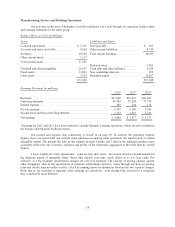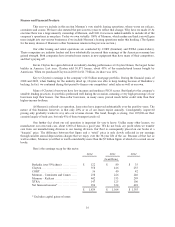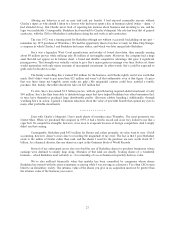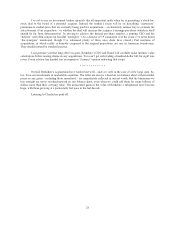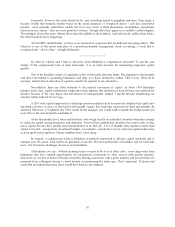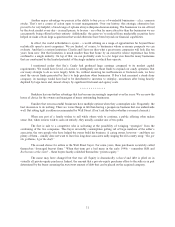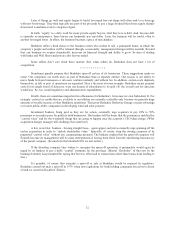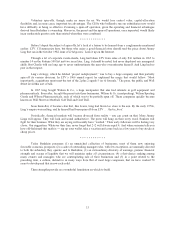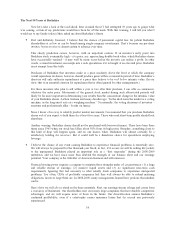Berkshire Hathaway 2014 Annual Report Download - page 26
Download and view the complete annual report
Please find page 26 of the 2014 Berkshire Hathaway annual report below. You can navigate through the pages in the report by either clicking on the pages listed below, or by using the keyword search tool below to find specific information within the annual report.Berkshire – Past, Present and Future
In the Beginning
On May 6, 1964, Berkshire Hathaway, then run by a man named Seabury Stanton, sent a letter to its
shareholders offering to buy 225,000 shares of its stock for $11.375 per share. I had expected the letter; I was
surprised by the price.
Berkshire then had 1,583,680 shares outstanding. About 7% of these were owned by Buffett Partnership
Ltd. (“BPL”), an investing entity that I managed and in which I had virtually all of my net worth. Shortly before the
tender offer was mailed, Stanton had asked me at what price BPL would sell its holdings. I answered $11.50, and he
said, “Fine, we have a deal.” Then came Berkshire’s letter, offering an eighth of a point less. I bristled at Stanton’s
behavior and didn’t tender.
That was a monumentally stupid decision.
Berkshire was then a northern textile manufacturer mired in a terrible business. The industry in which it
operated was heading south, both metaphorically and physically. And Berkshire, for a variety of reasons, was unable
to change course.
That was true even though the industry’s problems had long been widely understood. Berkshire’s own
Board minutes of July 29, 1954, laid out the grim facts: “The textile industry in New England started going out of
business forty years ago. During the war years this trend was stopped. The trend must continue until supply and
demand have been balanced.”
About a year after that board meeting, Berkshire Fine Spinning Associates and Hathaway Manufacturing –
both with roots in the 19th Century – joined forces, taking the name we bear today. With its fourteen plants and
10,000 employees, the merged company became the giant of New England textiles. What the two managements
viewed as a merger agreement, however, soon morphed into a suicide pact. During the seven years following the
consolidation, Berkshire operated at an overall loss, and its net worth shrunk by 37%.
Meanwhile, the company closed nine plants, sometimes using the liquidation proceeds to repurchase
shares. And that pattern caught my attention.
I purchased BPL’s first shares of Berkshire in December 1962, anticipating more closings and more
repurchases. The stock was then selling for $7.50, a wide discount from per-share working capital of $10.25 and
book value of $20.20. Buying the stock at that price was like picking up a discarded cigar butt that had one puff
remaining in it. Though the stub might be ugly and soggy, the puff would be free. Once that momentary pleasure
was enjoyed, however, no more could be expected.
Berkshire thereafter stuck to the script: It soon closed another two plants, and in that May 1964 move, set
out to repurchase shares with the shutdown proceeds. The price that Stanton offered was 50% above the cost of our
original purchases. There it was – my free puff, just waiting for me, after which I could look elsewhere for other
discarded butts.
Instead, irritated by Stanton’s chiseling, I ignored his offer and began to aggressively buy more Berkshire
shares.
24


